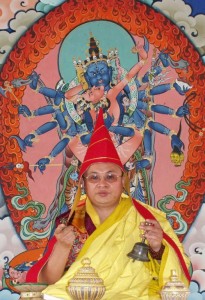There are prayers, and there are prayers. Buddhism in Bhutan is a way of life where prayers permeate every occasion or activity. And the great prayer of the Monlam Chhenmo is revered as the king of all prayers.
The prayer has its centuries-old roots in India and presently lives on at Bodhgaya or Dorji Dhen in Bihar, attracting thousands of devotees. Buddhists from all over converge at Bodhgaya in winter to attend the great prayer ceremony.
The Monlam Chhenmo was initiated and established in Lhasa, Tibet by His Excellency Gyalwa Tshongkhapa alias Lobzang Drakpa in front of Lhasa’s Jowo Shacha Muni (the wish-fulfilling image of Lord Buddha) in the year 1409. It was during the Monlam Chhenmo that the title of Khenpo (master) was conferred and Gesheys (scholars) ordained. However, the practice was banned during the Cultural Revolution in the late 50s.

In Bhutan, the Monlam Chhenmo was revived following the enthronement of His Holiness the 70th Je Khenpo (Supreme Abbot) – Trulku Jigme Choeda – in 1996. Over the years, the Je Khenpo has progressively performed the prayer in all the 20 districts of the country.
At the time of the prayer, Phagpa Zangpo Choepa Monlam is recited a hundred thousand times. The Zangchoe Monlam or the true words of the Buddha is believed to evoke peace and enlightenment for all who recite them. In turn, during the recitations, devotees will be blessed with luck, long life, altruistic traits and prosperity while departed souls will attain the nonreturnable state of eternal peace.
The main purpose of the great prayer festival is also to pray for the long life of all the holy Gurus and for the survival and propagation of the Dharma in the minds of all sentient beings.
In Bhutan it is believed that the communal prayers offered to all the Buddhas with strong faith and devotion help overcome obstacles, misfortunes, famine, diseases, natural disasters, environmental disorders, wars, political turmoil and social unrest.

